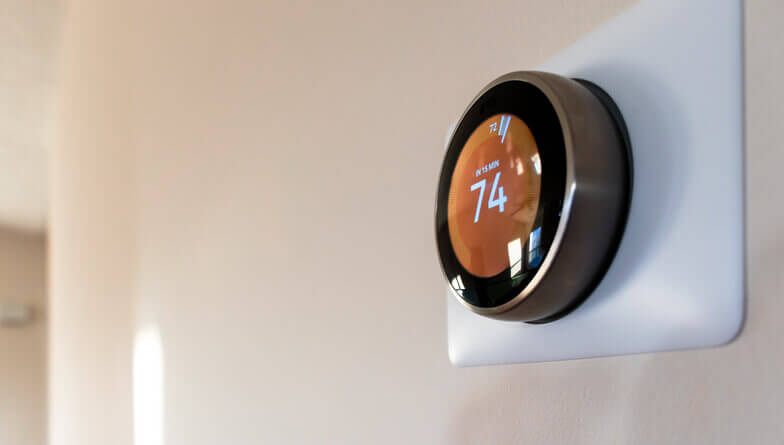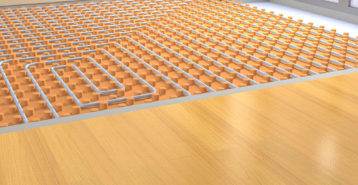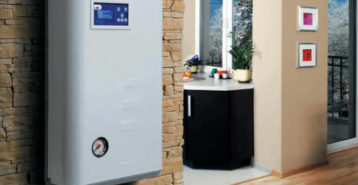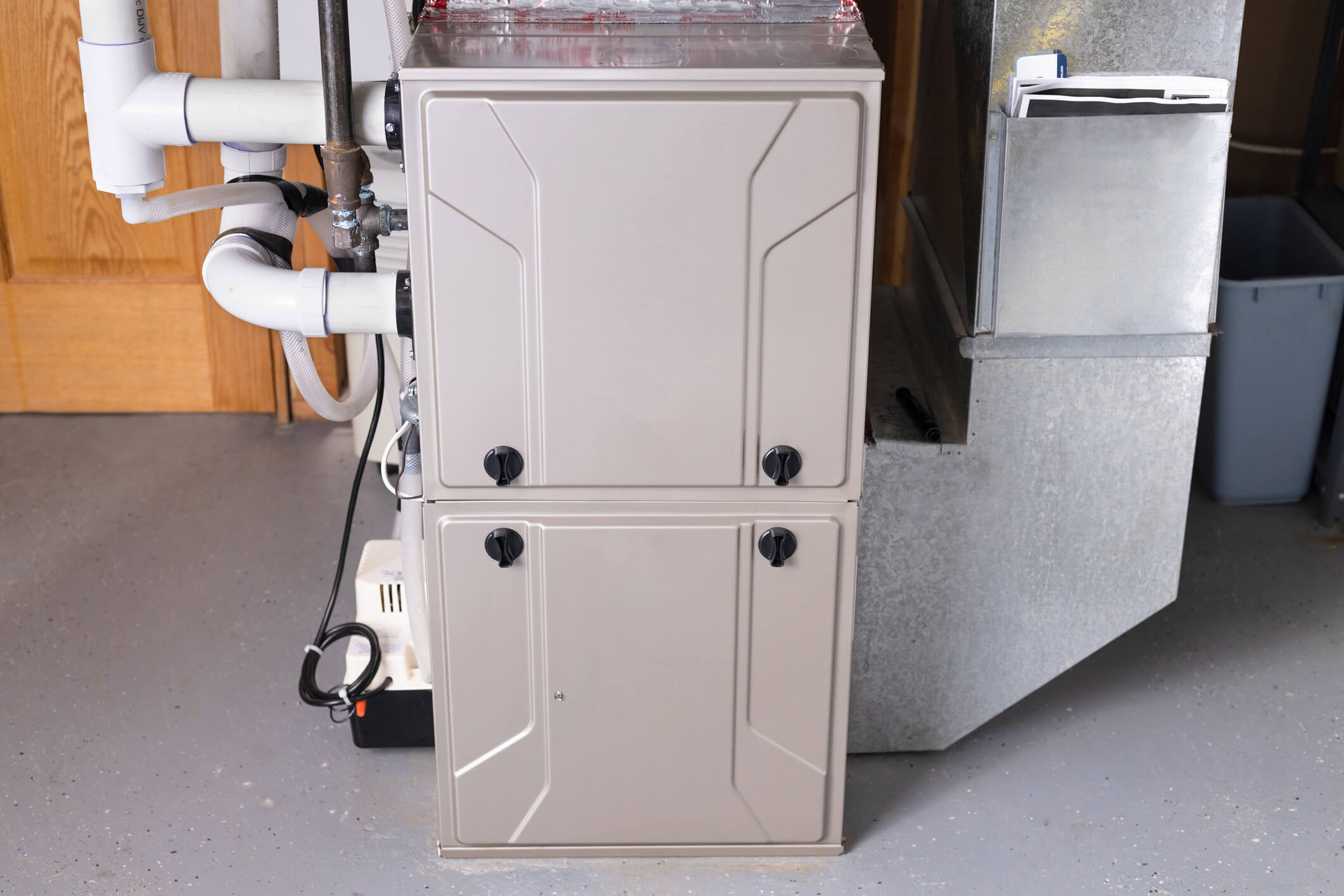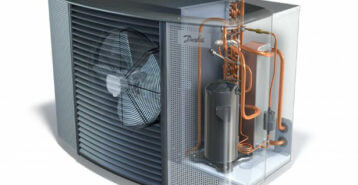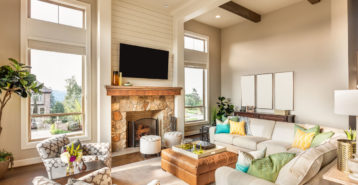What Is Electric Heating?
Electric heating uses electricity as the energy source to warm your home. Some systems move heat very efficiently (heat pumps), while others create heat by warming metal coils (electric furnaces, baseboards, space heaters). Electric options can be central — serving the whole house through ducts or tubing — or local, heating a single room or zone.
Is Electric Expensive?
Your costs will depend on the system you choose and local utility rates. As a rule, heat pumps have the lowest electric heating bills because they move heat rather than make it. Electric resistance systems (furnaces, baseboards, electric boilers) usually cost more to run than gas in cold climates, but they can be a smart fit if gas isn’t available or you want an all-electric home.
Here’s how much you’ll pay for installation of different electric heater types:
- Air-Source Heat Pump: $6,500 to $12,000
- Ductless Mini Split: $3,000 to $8,000; multi-room $9,000 to $15,000
- Electric Furnace: $4,500 to $9,500
- Dual-Fuel Option (Heat Pump With Gas Backup): $9,000 to $16,000
- Radiant Floor Heat: $10 to $20 per square foot installed (room projects often $2,000 to $8,000)
- Electric Boiler + Radiators/Baseboards: $8,000 to $18,000
- Wall/Baseboard/Infrared Room Heaters: $150 to $900 per room installed
How Much Does It Cost to Run an Electric Heater?
Operating cost varies by climate, insulation, thermostat settings, and electricity or fuel prices. As a simple comparison, the table below shows typical monthly heating costs for an average-sized home in a moderate U.S. climate. Your bills may be lower in mild areas and higher in very cold regions.
| Month | Heat Pump (Central) | Electric Furnace | Electric Radiant Floor (Main Areas) | Room Heaters (2 Rooms) | Gas Furnace | Oil Furnace |
|---|---|---|---|---|---|---|
| January | $90 to $150 | $150 to $280 | $110 to $200 | $70 to $120 | $80 to $140 | $120 to $220 |
| February | $70 to $130 | $130 to $240 | $90 to $170 | $60 to $100 | $70 to $120 | $100 to $190 |
| March | $50 to $100 | $90 to $170 | $70 to $130 | $40 to $80 | $50 to $100 | $80 to $150 |
| November | $60 to $120 | $110 to $200 | $80 to $150 | $50 to $90 | $60 to $110 | $90 to $170 |
| December | $80 to $140 | $140 to $260 | $100 to $180 | $60 to $110 | $70 to $130 | $110 to $200 |
Heat pumps are usually the least expensive electric option to run. Electric resistance systems often cost more to operate than gas or oil in colder regions.
Electric Heating System Types
These systems range from whole-home to room-by-room. Below, each option includes cost, how it heats, pros, cons, and who it fits best.
Heat Pump
- Cost: $6,500 to $12,000 (ducted air-source).
- How It Heats: Moves heat from outdoor air into your home; cools in summer by reversing the process.
- Pros: Lowest heating bills, heating and cooling in one, steady comfort, no combustion.
- Cons: Very cold snaps may need a cold-climate model or backup heat.
- Best for: Most homes with ducts; great for all-electric goals and lower monthly bills.
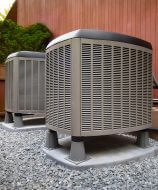
Furnace (Electric)
- Cost: $4,500 to $9,500.
- How It Heats: Heats metal coils with electricity, then a blower pushes warm air through ducts.
- Pros: Simple, uses existing ducts, lower upfront than many heat pumps.
- Cons: Higher monthly cost than heat pumps, especially in cold climates.
- Best for: Homes without gas service that want a straightforward central system.
Furnace and Heat Pump (Dual-Fuel)
- Cost: $9,000 to $16,000.
- How It Heats: Heat pump runs most days; gas furnace takes over in very cold weather.
- Pros: Comfort and efficiency together, reliable backup in deep cold.
- Cons: Two appliances to maintain, gas line required.
- Best for: Colder regions, homeowners prioritizing comfort and bill savings.
Radiant Floor Heating (Electric)
- Cost installed: $10 to $20 per square foot (rooms often $2,000 to $8,000).
- How it heats: Electric mats or cables under tile or engineered flooring warm surfaces and the room.
- Pros: Luxurious, even heat; great for bathrooms, kitchens, basements.
- Cons: Costly to run as a whole-home system; best as a targeted upgrade.
- Best for: Room remodels, cold floors, supplemental comfort zones.

Radiator (Electric or Electric Boiler With Radiators)
- Cost: Space radiators cost $150 to $900 per room; electric boiler systems are $8,000 to $18,000.
- How It Heats: Electric elements or hot water from an electric boiler warm radiators that release gentle heat.
- Pros: Quiet, even warmth, good for allergy-sensitive homes.
- Cons: Electric boiler systems can be pricey to run vs. heat pumps; separate cooling needed.
- Best for: Homes that value hydronic comfort or are converting older radiator systems to electric.
Ducted Heating
- Cost: Similar to electric furnace — $4,500 to $9,500 (uses existing ductwork).
- How It Heats: Electric resistance coils inside a central air handler.
- Pros: Simple, fast installation where ducts already exist.
- Cons: Higher monthly cost than heat pumps; ducts must be in good shape.
- Best for: All-electric homes seeking basic central heat.
Baseboard and Wall Heaters (Add-On)
- Cost: $200 to $700 per room.
- How It Heats: Electric elements warm air that rises along the wall.
- Pros: Low upfront cost, easy add-on for chilly rooms.
- Cons: Higher operating cost; no cooling.
- Best for: Small spaces, rentals, seasonal rooms.
Infrared Panels (Add-On)
- Cost: $300 to $900 per panel.
- How It Heats: Radiates warmth to people and surfaces, similar to sun warmth.
- Pros: Quick comfort, slim profile, zone control.
- Cons: Limited range; best as supplemental heat.
- Best for: Home offices, bathrooms, spot heating.
Electric vs. Gas Heating Comparison
| Topic | Electric Heat Pump | Electric Furnace or Baseboard | Gas Furnace |
|---|---|---|---|
| Upfront Cost (Installed) | $6,500 to $12,000 (cold-climate models: $9,500 to $15,000) | Electric furnace: $4,500 to $9,500; Whole-home baseboards: ~$3,000 to $8,000 | $4,500 to $9,000 (furnace only) |
| Monthly Cost (Heating) | $60 to $150 (peak winter month) | $120 to $280 (peak winter month) | $70 to $160 (peak winter month; varies with gas price) |
| Cooling Included | Yes (AC is built in) | No | No (adding central AC is typically +$4,000 to $8,000) |
| Maintenance (Typical) | $180 to $450/yr (two tune-ups) | $90 to $200/yr (simple check for furnace; baseboards minimal) | $120 to $300/yr |
| Lifespan | 12 to 18 years | 12 to 18 years (baseboards can be 10 to 20 years) | 15 to 20 years |
| Best For | All-electric homes, lower bills, year-round comfort | Simple installs, mild climates, lower upfront | Colder climates with gas service, lower peak-month bills |
Electric Heating Q&A
What Is the Most Efficient Electric Heating?
You’ll get the most efficiency from a heat pump. It moves heat rather than making it, delivering two to three units of heat for each unit of electricity used.
What Is the Downside?
Electric resistance heat (furnace, baseboards, electric boiler) can be expensive to run in colder climates. Heat pumps fix much of this but may need a cold-climate model or backup heat in extreme cold.
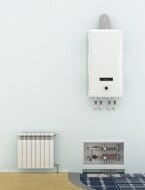
What Is the Lifespan of an Electric Heater?
Most central systems last 12 to 18 years. Room heaters can last 5 to 10 years. Good maintenance and proper sizing extend life.
What Are the Benefits?
- No Flames or Fuel Tanks: There’s no burner, chimney, or on-site fuel storage.
- Easier Installation: A straightforward fit for homes without gas service or where running a gas line would be costly.
- Heating and Cooling in One (with Heat Pumps): One system can warm you in winter and cool you in summer.
- Cleaner Indoor Air: No combustion byproducts inside the home, which helps reduce odors and soot.
- Steady, Even Comfort: Modern systems hold a consistent temperature with fewer hot and cold spots.
What Are the Parts of an Electric Heater?
- Indoor Unit or Heating Element: The part that makes or moves heat into your home.
- Fan or Air Path: Pushes warm air through your rooms, or warms nearby surfaces (for panels and baseboards).
- Thermostat or Controls: Lets you set the temperature and schedule, and switch between modes.
- Power and Safety Features: The electrical connection, breaker, and built-in sensors that prevent overheating and keep the system safe.
Bottom Line: Should I Choose an Electric Heating System?
If you want an all-electric home with lower monthly bills, a heat pump is the clear winner for most climates. Choose an electric furnace or baseboards when you need a simple, lower-cost install and your winters are mild. Add radiant floors or infrared panels for targeted comfort upgrades. In very cold regions, consider a cold-climate heat pump or a dual-fuel setup that pairs a heat pump with a gas furnace for the coldest days. When in doubt, get two or three itemized quotes and ask each contractor which system best fits your home, climate, and budget.
Compare top-rated HVAC pros in your area.
Read real homeowner reviews, explore qualifications, and view promotions. Modernize makes it easy to browse professionals and find one that will be perfect for your project.
